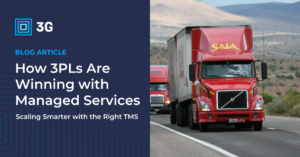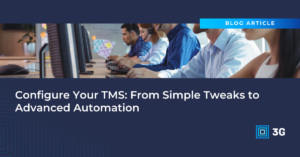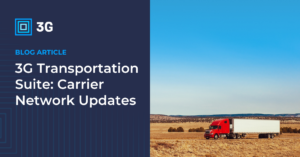
NMFC Changes Are Coming — Here’s How Descartes Pacejet Has You Covered
Big changes are coming to freight classification standards this summer — and Descartes Pacejet is already preparing so you don’t have to worry. Effective July
Move everything over the road more optimally with the industry’s most powerful planning algorithm
Most complete and connected over-the-road network for LTL, parcel, 3PL, Truckload carriers
Best-in-class packing and shipping for faster fulfillment with fewer errors and less labor
Integration software that quickly connects your business to customers, carriers, partners
Pre-integrated access to ERP and financial applications like NetSuite, Acumatica, or IFS
Pre-integrated access to popular applications, industry specialists, and value-add services
Unlock expert tips and cutting-edge strategies that help shippers, 3PLs, and brokers streamline logistics, reduce costs, and stay ahead in a dynamic logistics industry
Discover real-world success stories where innovative leaders have revolutionized their logistics with 3G’s powerful solutions
Get the latest updates and breakthroughs from 3G, and see how we’re driving the future of shipping and transportation management
Connect with industry experts and peers at events, where you’ll gain the knowledge and insights needed to lead in logistics

Big changes are coming to freight classification standards this summer — and Descartes Pacejet is already preparing so you don’t have to worry. Effective July

How 3PLs Are Innovating with Managed Services Third-party logistics (3PL) providers are no longer just responsible for moving freight—they’re expected to deliver end-to-end supply chain

In the fast-paced world of logistics, no two businesses are the same. That’s why flexibility and adaptability are cornerstones of the 3G’s Transportation Management System.

In today’s dynamic shipping landscape, staying ahead of changes and continuously enhancing carrier network integrations is crucial to delivering a seamless shipping experience. At 3G,

Is your TMS offshoring, or being acquired? Learn the risks and how to stay compliant and secure.

Here are five changes your operation could experience if your TMS provider is acquired by another company.

In today’s world, sustainability isn’t just a buzzword; it’s a crucial part of business strategy. Companies are increasingly committed to reducing their carbon footprint and

Did you know that with the 3G Pacejet Shipping Contract Rates Module, you can simplify rate shopping and unlock significant savings? Finding the best Less-than-Truckload

A reliable transportation management system (TMS) isn’t just an operational tool for shippers, 3PLs, and brokers — it’s a lifeline that minimizes losses and maximizes

As sustainability in the shipping and transportation industries continues to become more prominent, taking initiative to track carbon emissions is no longer just a preference,